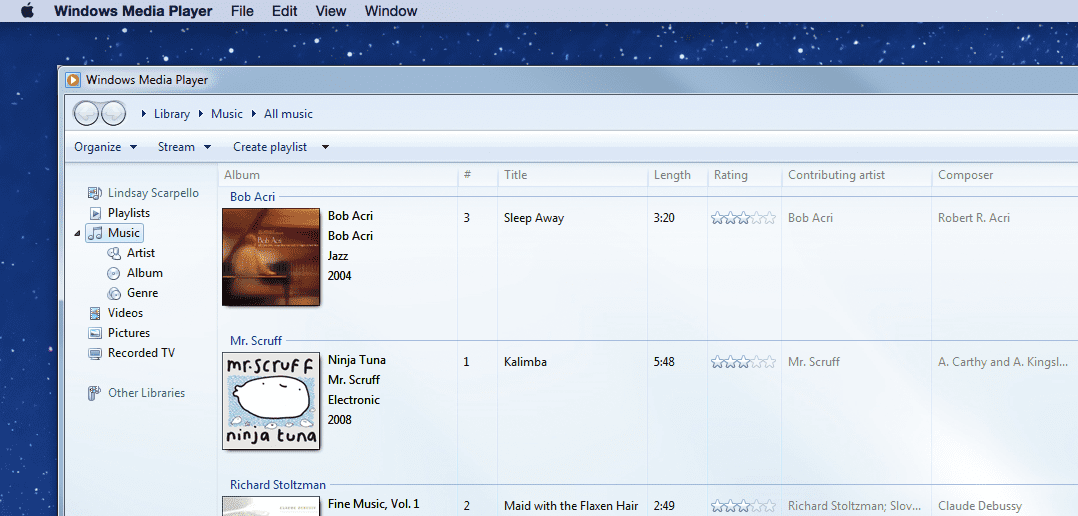Devices and Mac OS X version
VLC media player requires Mac OS X 10.7.5 or later. It runs on any 64bit Intel-based Mac. Previous devices are supported by older releases.
Note that the first generation of Intel-based Macs equipped with Core Solo or Core Duo processors is no longer supported. Please use version 2.0.10 linked below.
Media Player Classic is not available for Mac but there are plenty of alternatives that runs on macOS with similar functionality. The most popular Mac alternative is VLC Media Player, which is both free and Open Source.If that doesn't suit you, our users have ranked more than 100 alternatives to Media Player Classic and many of them are available for Mac so hopefully you can find a suitable. Best Alternative to Windows Media Player for Windows/Mac; Part 3. Other 4 Free Alternatives to Windows Media Player; Part 1. What is Windows Media Player? Developed by Microsoft, Windows Media Player (WMP) is a full-featured media player that supports playing your video files in an array of formats.
Web browser plugin for Mac OS X
Use it as an AVI player for Mac or a viewer for Windows Media Video (WMV) and dozens of other file types, including HTML5 video (WebM, OGV), RM, MTS, H.264 video, and more. Enjoy Music in Your Preferred Format Whatever your audio format is — MP3, AAC, OGG, FLAC, WMA, WAV, M4A, or any other — Movavi Media Player probably supports it. Windows Media Player is Microsoft's media player tailored for Mac users. It allows you to easily play music and movies in all audio and video formats released before 2005. (New Windows formats can be read using QuickTime or Flip4Mac.) Note. Devices and Mac OS X version. VLC media player requires Mac OS X 10.7.5 or later. It runs on any 64bit Intel-based Mac. Previous devices are supported by older releases.
Support for NPAPI plugins was removed from all modern web browsers, so VLC's plugin is no longer maintained. The last version is 3.0.4 and can be found here. It will not receive any further updates.

Older versions of Mac OS X and VLC media player
We provide older releases for users who wish to deploy our software on legacy releases of Mac OS X. You can find recommendations for the respective operating system version below. Note that support ended for all releases listed below and hence they won't receive any further updates.
Mac OS X 10.6 Snow Leopard

Use VLC 2.2.8. Get it here.
Mac OS X 10.5 Leopard
Media Player For Mac With Subtitles

Use VLC 2.0.10. Get it for PowerPC or 32bit Intel.
Mac OS X 10.4 Tiger
Mac OS X 10.4.7 or later is required
Use VLC 0.9.10. Get it for PowerPC or Intel.
Mac OS X 10.3 Panther
QuickTime 6.5.2 or later is required
Use VLC 0.8.6i. Get it for PowerPC.
Mac OS X 10.2 Jaguar
Use VLC 0.8.4a. Get it for PowerPC.
Mac OS X 10.0 Cheetah and 10.1 Puma
Use VLC 0.7.0. Get it for PowerPC.
Support for Windows 7 ended on January 14, 2020
We recommend you move to a Windows 10 PC to continue to receive security updates from Microsoft.
Download Windows Media Player

Get Windows Media Player for your version of Windows, or learn how to play Windows Media files on your Mac. Get the details here.
Get help
Find help and how-to information for your version of Windows Media Player. Learn about the features and how to fix problems.
Windows Media Player 12
Play a CD or DVD in Windows Media Player
Burn and rip CDs
Codecs: frequently asked questions
If Windows Media Player stopped working correctly after the latest updates from Windows Update, you can verify that the updates are the problem by using System Restore. To do this:

Media Player For Mac Catalina
Select the Start button, and then type system restore.
Select Create a restore point, and then in the System Properties pane, select System Restore.
Follow the prompts to select the restore point just before the round of updates that seemed to trigger the problem. Then run the system restore process. (This takes a while.)
After your system is restored to the earlier configuration, check to see whether Windows Media Player runs correctly again.
Media Player For Mac
For advanced video features like 4K, you might also want to try Microsoft Movies & TV. To download this for free from Microsoft Store, go to Movies & TV and select Get.
Media Player For Windows 7 64 Bit
Make it yours
Download Wmp For Mac
Customize Windows Media Player with easily installed skins, visualizations, and plug-ins for a new look and extra features. Learn more.
